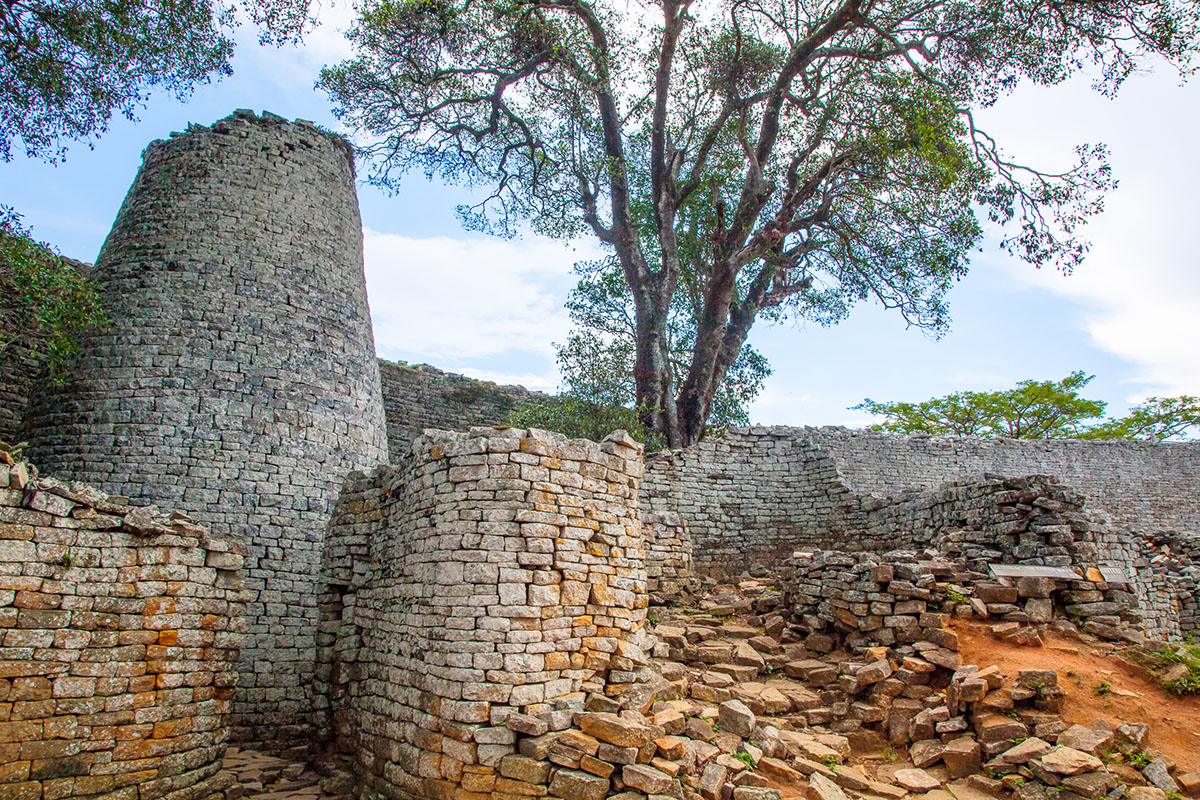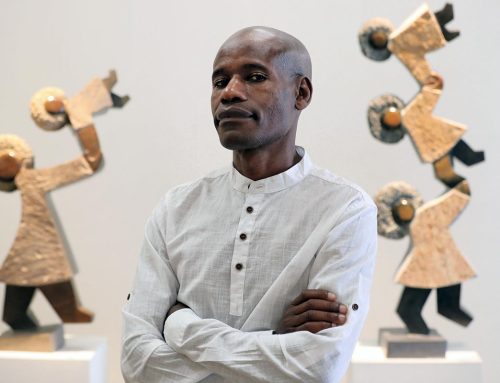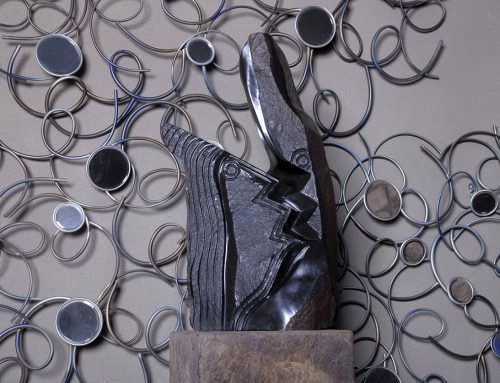The histories of Zimbabwe and its sculptors are inextricably linked. Zimbabwe means “house of stone” in the Shona language as is derived from an ancient empire that thrived in country from the 11th to the 15th centuries. Known as Great Zimbabwe, this sprawling stone city specialized in agriculture and international trade. Archeologists discovered rare artifacts, such as Chinese porcelain, within its stone chambers, serving as a testament to the complexity and scope of the Shona empire. Sculpture adorned Great Zimbabwe. The most notable being the depiction of the fish eagle or Zimbabwean bird that is now prominently featured on the nation’s flag.
Indeed, Shona sculpture stands as a testament to the rich artistic heritage of the Shona people of Zimbabwe. Renowned for its striking beauty and intricate craftsmanship, this sculptural tradition carries with it a vibrant history that spans generations. The history of Shona sculpture can be traced back to pre-colonial Zimbabwe, where stone sculpting had already been practiced for centuries. The Shona people, with their deep spiritual beliefs and reverence for the natural world, began crafting stone sculptures as a means of connecting with their ancestors and expressing their cultural identity. The stone sculptures, primarily made from locally abundant materials such as serpentine, dolomite and verdite, reflected the Shona’s intimate relationship with nature.
The 20th century marked a significant turning point for Shona sculpture. During the Zimbabwean liberation struggle against colonial rule, many Shona artists actively participated in the resistance movement. The intense political environment infused their artwork with a sense of activism and social commentary. Sculpture became a powerful medium through which the Shona people conveyed their struggles, hopes, and aspirations.
In the 1960s, a series of fortuitous events led to the international recognition of Shona sculpture. Frank McEwen, an influential figure and the founding director of the National Gallery of Rhodesia (now Zimbabwe), recognized the artistic merit of Shona sculpture and organized an exhibition that showcased their extraordinary beauty. This exhibition marked the beginning of the global journey for Shona sculpture.
With international recognition, Shona sculpture experienced exponential growth in popularity and demand. Artists, both established and emerging, pushed the boundaries of the traditional form, experimenting with different styles, subjects, and techniques. The aesthetic language of Shona sculpture expanded, embracing abstract forms and diverse themes that depicted the human experience, spirituality, and nature. After independence in 1980, the movement grew exponentially as previously sanctioned trade routes opened and art collectors arrived in numbers. Several master sculptors, like Henry Munyaradzi and Nicholas Mukomberanwa, defined the movement in the 1980s and 1990s and took part in landmark international exhibitions. Current stars like Dominic Benhura and Joe Mutasa have pushed the form even further and maintain rigorous international exhibition schedules.
Shona sculpture has become a thriving art industry in Zimbabwe. The work of Shona artists can be found in galleries and museums worldwide, appreciated for its distinctive aesthetics and cultural significance. The sculptures continue to evolve, with artists incorporating contemporary influences while staying true to their ancestral roots. This art form serves as a source of income and cultural preservation, enabling the Shona community to sustain their heritage and support their livelihoods.
Shona sculpture plays a vital role in preserving and promoting the cultural heritage of the Shona people. The sculptures embody the stories, beliefs, and values of the community, acting as a bridge between the past and the present. They serve as a reminder of the resilience and creativity of the Shona people, fostering a sense of pride and identity among both the artists and the wider society.
The history of Shona sculpture is an extraordinary narrative of artistic expression, cultural resilience, and global recognition. From its humble origins to its present-day stature, Shona sculpture has captivated audiences around the world with its profound beauty and symbolism. As this artistic tradition continues to evolve, it remains a testament to the rich heritage and artistic prowess of the Shona and Zimbabwean people, carrying their legacy into the future. We at ZUVA gallery are proud to continue to contribute to this legacy and its ongoing evolution.



